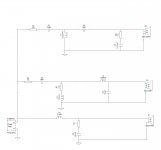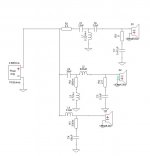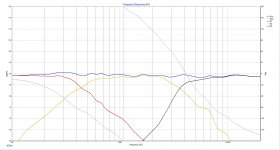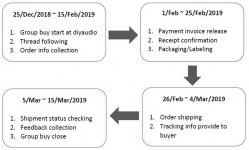Link to Album
Complete Cardmatic KS-15874-L2 Restoration - Album on Imgur
This was my Covid summer project of 2020 I did a complete restoration on a Hickok Cardmatic KS-15874-L2. The work took me about 2 months. I ended up having to replace every resistor and capacitor.
I own a couple of tube amps and I was looking for an affordable way of testing my tubes rather then going by ear. I had a heater failure with some Gold Lion 300B that took out a few parts of the the B+ circuit in my TU-8600R.
I found this Hickok Cardmatic KS-15874-L2 on ebay for about $300. The restoration itself cost about $250 in parts roughly.
The Cardmatic arrived with about 98% of its orginal electriconic components, meaning it was only ever worked on just a few times within its 60 years plus of its life, even the power supply tube are all orginal with the Hickok name on the glass. The last owner told me it was last worked on around the 90's to bypass some bad power supply caps.
I ended up doing a complete restoration rather than a recap when I found that almost every resistor was far off spec in the power supply circuit when trying to correct the messy capacitor repairs made in the 90s.
Hickok used carbon composition resistors almost everywhere except for where it mattered like the test circuits. They used wire wound resistors there. Anyways carbon composition resistors are made by adding impurities that increase resistance, these addives have different thermal coefficient, and so when they heat up and expand and contract over time they will crack and increase in resistance, they are also very touchy to humidity and will begin to short out, the micro cracks don't help. The worst offenders were 60% out of spec both over and under the labled rating. I went with mostly automotive resistors due to their fire resistance. All tolerances exceeded. So this tester is on point in the power supply now.
Every capacitor was far off too, I refurbished the cannister caps that I could.
There was only one bad potentiometer which is used for the screen adjust in the power supply. Fortunately the rest are in point.
I also had to recalibrate the card reader since it wasn't functional. It was a huge pain in the ***. I cleaned every pin off and greased with conducive graphite grease. The reader has to have the perfect clearance both when the card cradle is up and down.. too high and not all the pins will engage when a card is inserted. Too low and you risk shorting out the test circuits and the pins wont disengage when the cradle is raised, it took a week of a lot of trial and error and very very small adjustments. I'm sure Hickok has some special fixture for this in the factory.
I calibrated and tested every circuit and component using a set of 90 plus cards meant for this. And it is dialed in perfectly!! Everything was double checked with a Fluke meter.
I now have a nice tester to check my tubes in my TU-8600R and my TU-8500 pre amp!
Very happy I could get this little piece of electronics history fully operational!




 to select by which chip amp i can starting.😕 I have already in my junk box LM3886, LM1876,TDA2009A,or i can manage any part no.
to select by which chip amp i can starting.😕 I have already in my junk box LM3886, LM1876,TDA2009A,or i can manage any part no.




 ,
,

